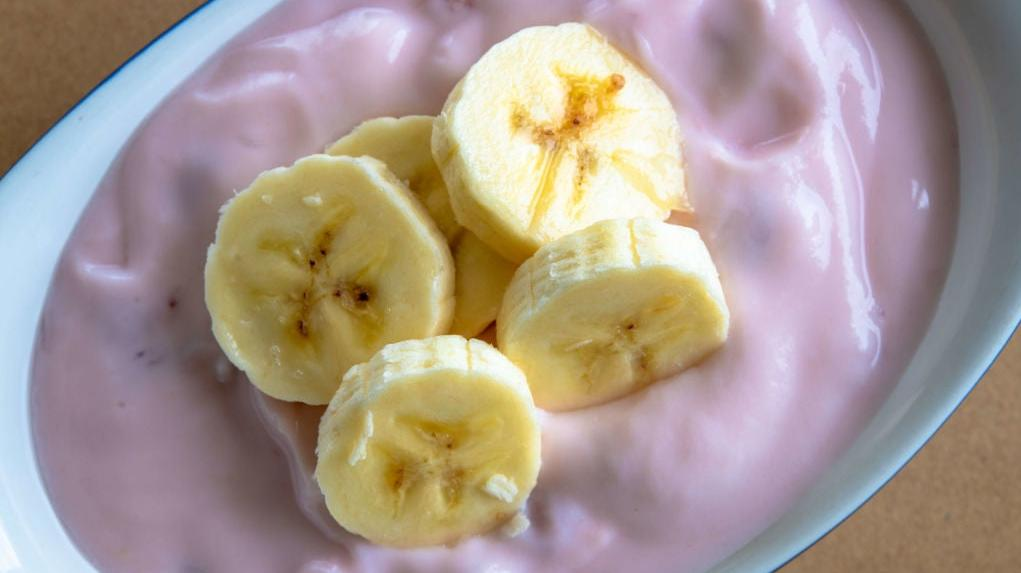You Need To Get Over Your Banana Hangups
Bananas are useful at any and all stages of ripeness.
I eat a banana every single day for breakfast. I'm eating one right now. Bananas are reasonably priced, plentiful, and filling, one bunch providing a week's worth breakfasts for roughly two bucks—but to reap the most benefit from bananas, you have to stop being so particular about them.
Whether it's their color, texture, or the way they're peeled, people have a lot of visceral reactions to bananas. Bananas, however, are adaptable as hell, and there's always a way to make use of the ones you have. Let's unpack some common banana hangups (including whether to hang them up).
Brown spots on bananas are just fine
I know too many people who can't eat bananas until they're perfectly, uniformly, deeply yellow—and if they miss that window and begin to see speckles of brown on the peel, the banana is no longer viable. Sure, we all have different preferences, but it's important to realize that the amount of brown coloring on a banana peel is not always a one-to-one indicator of overripeness.
Sometimes a brown area on the peel indicates a place where the banana experienced pressure—maybe something sat on it in the grocery bag?—and the flesh underneath may or may not have slight bruising. In the worst case scenario, the bruise can turn mushy. But in many cases, it's either barely detectable or just slightly softer and sweeter in the bruised area, like the bruised flesh of an apple. Bruised fruit can either be eaten normally (if the damage to the flesh and skin doesn't appear to be harboring microbial growth) or you can cut out the bruised portion and the rest of the fruit will typically be fine.
Banana hangers are a good way to prevent bruising and slow ripening, since they let the air circulate around the fruit without buildup of ethylene gas. But I've never found hangers strictly necessary; to prevent bruising, I typically just fan out the bananas on the counter so that they're not stacked heavily atop one another in the bunch.
Green, yellow, and brown bananas all have merit
Bananas are climacteric, which means they continue ripening after they're harvested. Greenish bananas are firm and harder to peel, with a slightly more vegetal sweetness, while perfectly ripe yellow bananas have the mellower flavor we most closely associate with the fruit. Once brown, the bananas are more sugary-sweet, and continue to get softer and sweeter as their peels brown and, eventually, blacken. Maybe you only like chomping on the yellow ones as a snack, but bananas at all stages of ripeness have merit.
Still a hint of pale green near each end of the banana? That's fine; those firmer, bananas are great for any application where you want the fruit to maintain its structure. Slice into discs and serve on top of warm oatmeal, or use them to adorn an ice cream sundae. You can also stick them in a fruit salad, where they'll hold up well against all the weight and juice of the other ingredients.
Meanwhile, a browner banana might be past its prime for snacking, but has a host of other uses. Mash it up for use in banana bread (or Caramelized Banana Upside-Down Cake). Add it to your overnight oats with some peanut butter and cinnamon. Or peel and slice the brown bananas into discs, then freeze them for use in future smoothies.
What are those banana strings?
Listen, stop freaking out about banana strings. Stop freaking out about banana strings. Much like the pulp in orange juice or the corn silk on a freshly husked cob, these starchy little strands that come off the banana as you're peeling it have been known to scare people off of bananas altogether. Those strings are called phloem bundles, and they distribute nutrients down through the fruit as it grows.
While I've read that peeling the banana from the bottom rather than the top will pull the strings away and leave you with a more perfectly naked banana, I have not observed this to be the case in my own peeling. They tend to stick around no matter what. You can absolutely pick them off and discard them when you're ready to eat, but it also won't hurt you to leave them on there, either. They are the reason your banana tastes so good, after all.
